
7 minute read
EXOTICS NEWS
The latest from the world of exotic animals
BIAZA calls for Brexit Transfer Agreement
Advertisement
The British and Irish Association of Zoos and Aquariums claims that important animal transfers between zoos in Great Britain and Ireland are "being prevented" and "animals can now no longer be transited through Great Britain on onward journeys into the EU". It has called for a sanitary and phytosanitary (SPS) agreement to be struck between the UK and EU to ease the restrictions. Among the breeding programmes managed in Ireland are for colobus monkeys and Francois langurs at Belfast Zoo. Nicky Needham, from BIAZA, said it was "hugely frustrating" that the transfer of animals, such as cheetahs and langur monkeys "has been made so much more difficult following Brexit". "Our zoos now face impossible hurdles and delays to partaking in international breeding programs," she outlined.
Christoph Schwitzer, chief executive of Dublin Zoo, said: "It is imperative that the UK and European Commission find a solution so that good zoos and aquariums can continue their work saving species from extinction."
Zoos and aquariums from Ireland have written to the British and Irish prime ministers to call for an agreement on the transfer of animals- post-Brexit, they include Belfast Zoo, Exploris Aquarium and Castle Espie Wetland Centre. Their letter suggests breeding programmes are at risk because of restrictions on animal movements. It said there were "excessive and in some cases prohibitive restrictions". The signatories, members of the British and Irish Association of Zoos and Aquariums (BIAZA), have also written to the president of the European Commission, Ursula von der Leyen, the letter outlined that there were 48 animal transfers between EU and UK zoos in 2021, compared with 1,400 "in a normal year". This is completely undermining the conservation impact of BIAZA member zoos, in all these nations," it added.
Europe`s Oldest Zebra?
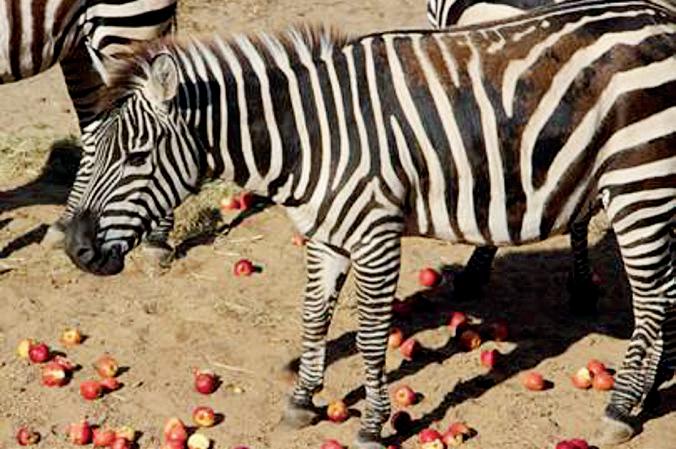
At Belfast Zoo, “Sandy” a female Grant’s zebra celebrated her 40th birthday at the end of July. It is believed she may be the oldest zebra in European collections, the average longevity for the species is between 25-30 yrs.
Crocodiles of the World
A clutch of American alligators have hatched to resident pair “Albert” and “Daisy”. The youngsters are currently swimming about the pool under the watchful eye of their mother. Albert is a mature specimen and came to the centre in March 2013 at just over 10ft in length. Whilst Daisy was already a long-term resident. Daisy and Albert produced their first clutch of eggs in spring 2013, and since then they have bred a number of times, the off-spring are used in educational programs, or are sent to other zoos around Europe. This species is known for their excellent parenting skills.
Cambridge Corvid Research Facility Saved
The renowned “corvid palace” – a research facility at the University of Cambridge has been saved from closure by public donations.
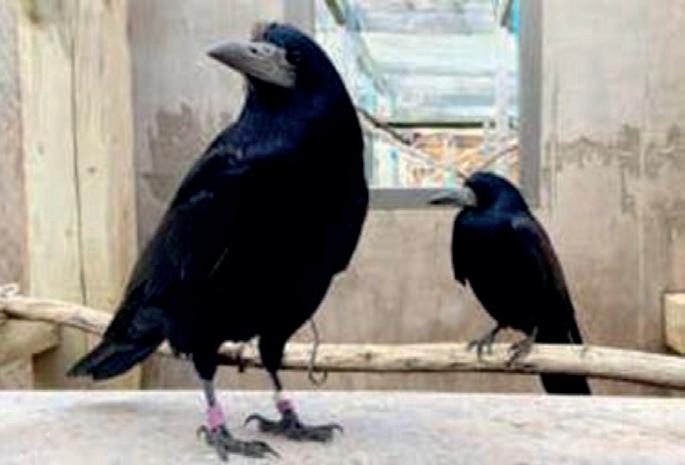
The centre for research on bird intelligence at the University of Cambridge has been saved from closure by a campaign kick-started by the New Scientist, which raised £500,000 from public donations in a matter of weeks. Together with support from the university, the campaign has secured the facility’s immediate future.
In May, it was reported that the 25 jays and seven rooks in Nicola Clayton’s Comparative Cognition Lab, would have to be rehomed, as it was facing closure in July due to Brexit and pandemicrelated funding difficulties. Donations from the public to support the lab also rolled in, totalling £500,000, which will keep the facility running for the next five years. “I’ve been overwhelmed in the most positive way by the support from the University of Cambridge, fellow academics and the general public from all walks of life,” says Clayton. “Every penny I’m so grateful for. It’s been an emotional roller-coaster, with a heart-warming, positive ending.” The facility was founded 22 years ago by Clayton and since then it has been key to understanding the cognitive abilities of corvid species (the crow family). in terms of chick loss”. "Coquet is the only place where you'll find them, last year there were 150 pairs so that's a species on a knife edge anyway. But they have been doing well every year until this year, increasing brilliantly at the start of the season, but then bird flu hit three or four weeks ago and it's just been working its way through the population." “If bird flu deaths were limited only to chicks, it would cause a "glitch" in the population but adults could still return to breed next year and over time the population would have the possibility to recover”. Paul says the fact that adult birds are dying as well is "really serious."

"We are operating in full PPE and have fences to separate the different species of chicks - of course, the adults can fly. At every point on the island we're disinfecting our boots so we don't spread the disease and we're removing corpses because they are the source of bird flu infection." "It's a very strange illness. Overall, it's absolutely devastating, this is the worst season I've ever seen and I've been there for 38 years."
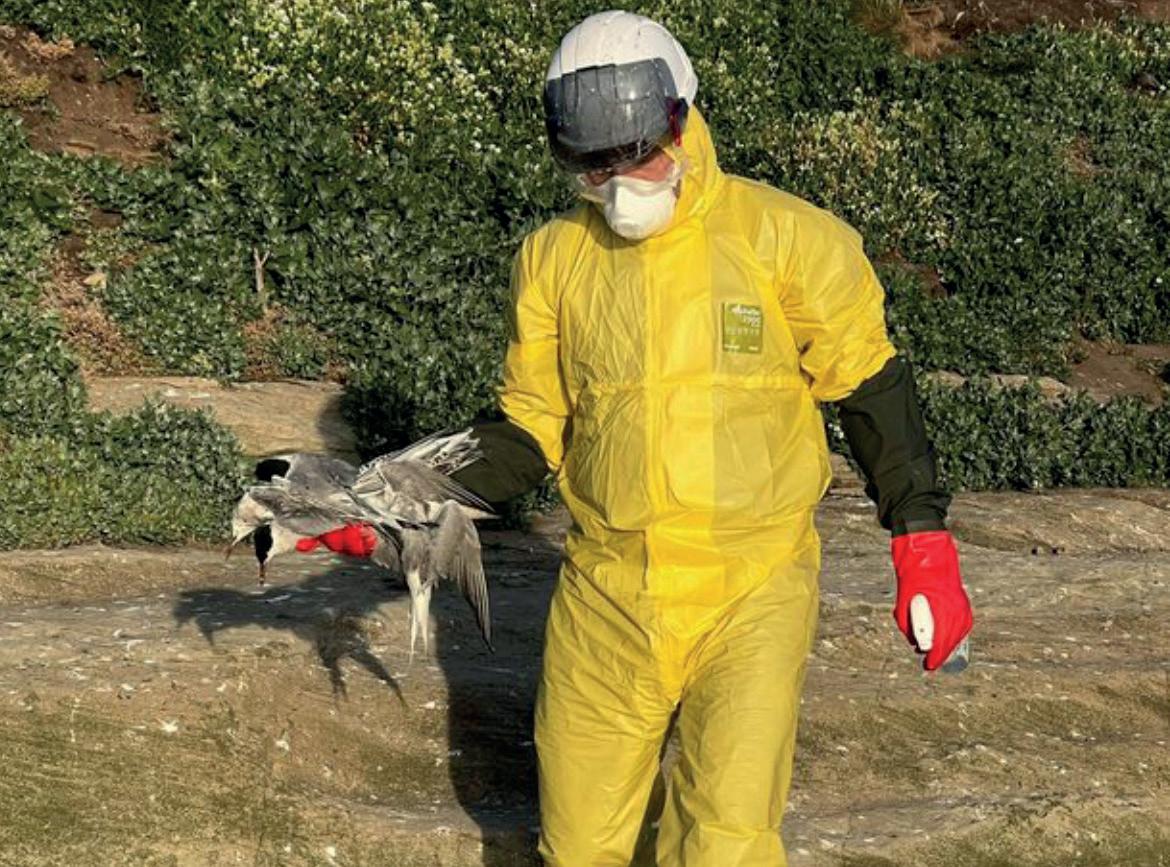
The UK Health Security Agency (UKHSA) continues to advise that the risk to the general public's health is very low, but people should not touch sick or dead birds. If found, please report any dead birds to Defra on 0345 9335577.
Bird-Flu Devastating Seabirds
Recently the U.K. has seen a surge in cases of Avian flu in seabird species not seen here before. In the past most avian flu cases have affected waterfowl and domestic fowl, but this year it appears that a new, perhaps more virulent, strain has taken hold of our native seabird species, and is the most widespread outbreak so far to hit the U.K. Those affected include various gulls, several species of tern and the Northern gannet colony on Bass Rock in East Lothian –which is the largest gannet colony in the world. In Shetland at least 1,000 gannets have died and hundreds of great skuas. The disease has been recorded on St Kilda which is home to the largest colony of Atlantic puffins in the U.K.
Another important seabird colony is Coquet Island, an RSPB sanctuary off the Northumberland coast, here can usually be found the only nesting roseate tern colony in the U.K. – normally with around 150 breeding pairs. There are also Sandwich, Arctic and common terns on the island, with bird flu affecting all four species, resulting in serious losses of chicks. Several adult birds have also died, which could severely affect seabird populations in the coming years.
Paul Morrison, RSPB Warden for Coquet Island, said: "The common terns were the first to fall victim to bird flu with the loss of the adults, and then it spread to the Arctic, then Sandwich, then the Roseate terns. We've now lost two thirds of the Roseate tern chicks and that's absolutely catastrophic
New Legless Lizard Species
A team of Australian Museum scientists have described the Hunter Valley Delma as the first legless lizard species endemic to New South Wales. A team of scientists from the Australian Museum has officially confirmed that a legless lizard from the Hunter Valley represents a new species to science, now named the Hunter Valley Delma (Delma vescolineata).
Previously confused with a very similar-looking species with a much wider distribution further south, the new species is known only from the Hunter Valley and Liverpool Plains of New South Wales (NSW). With a relatively small range under increasing habitat modification, NSW’s only endemic legless lizard is a significant addition to the diverse and often threatened reptile fauna of Australia, and a priority for further research.
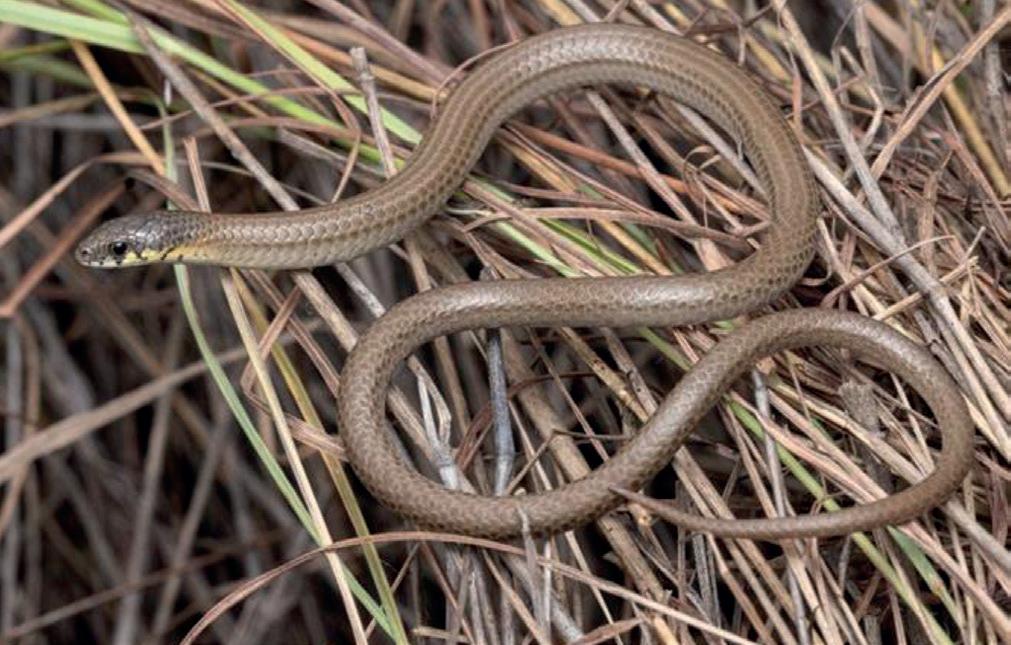
The Hunter Valley Delma (Delma vescolineata) was first found in 2012 by a local herpetological enthusiast Ryan Harvey and was initially considered a new population of the Striped Delma (Delma impar), however, this population looked somewhat different – it had barred lips and wasn’t as strongly striped, so the team at the Australian Museum began an investigation.
To confirm whether the species was indeed distinct, the team had to compare genetic samples to those from the Striped Delma from southern NSW. They also had to compare the physical features of the species to other similar legless lizards and in doing so they found that in addition to barred lips and weaker stripes there were also subtle differences in scales and head shape. The new species scientific name means “weakly striped”, a comparison to the Striped Delma found further south.
The Hunter Valley, where the lizard was discovered, is only two hours from the city of Sydney, so it is amazing how long this species went undetected. This is partially explained by its cryptic nature, living down burrows, in dense grass tussocks, and under rocks and fleeing rapidly when disturbed. It is also probable it was found earlier and assumed to be the Leaden Delma (Delma plebeia) which also occurs in the Hunter Valley. The Hunter Valley Delma is only found in the Hunter Valley and the nearby Liverpool Plains and like other related species it prefers open grassland habitats. The Hunter Valley Delma can be locally abundant in some environments and even seems to display a tolerance for disturbance, being found in very weedy, cleared, and grazed areas. However, the small area it is known to occur in and threats like loss of habitat to mining, development and cropping make it likely to be considered threatened with extinction. Further research into the ecology of the species will help determine what threats impact it the most and what actions could be taken to protect it.
Rare Zoo-Bred Tadpoles Released in Puerto Rico
Potter Park Zoo, in Lansing, has recently sent nearly 2,000 Puerto Rican crested toad tadpoles to Puerto Rico for repopulation as part of their ongoing release programme.
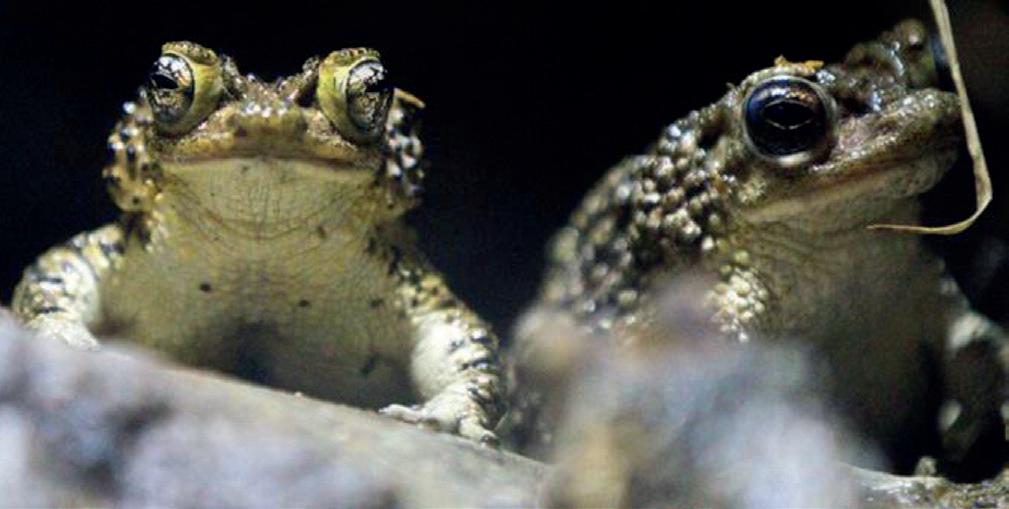
The species has been bred and reared in the zoo since the 1980s, in carefully controlled environments designed to replicate their natural habitat. A small population was found in the late 1960s – having been previously thought to be extinct. The crested toad is the only native toad in Puerto Rico in the Caribbean and all the animals are owned by the Puerto Rican Government – who initially loaned the adult toads to the zoo for breeding.
The zoo have been involved in the release programme since 2009. Once hatched the tadpoles are kept at the zoo for a week before being transported to the airport by the company FedEx, here they are met by the zoos partners who then take them out to the releases ponds. These areas are protected sites, and it is common to see tadpoles already present – these are the offspring from previous releases, so it is clear to see that the species is breeding in the wild.










